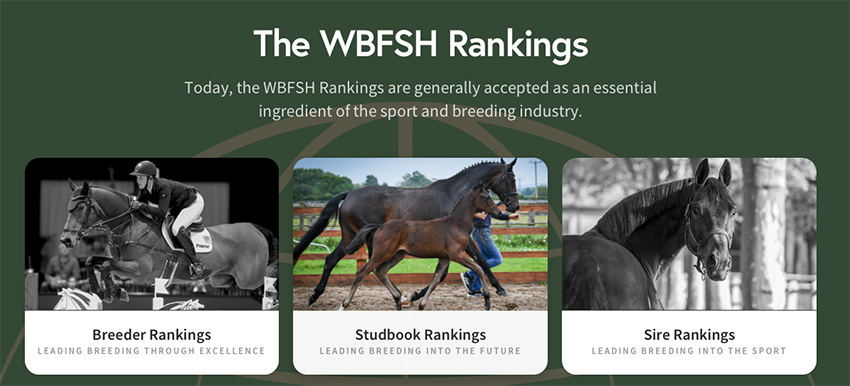
by Christopher Hector
The breeding rankings are designed to assist mare owners in their choice of stallions, but at times it feels like they are there to provoke debate amongst the observers of sporthorse breeding, here’s a good example.
At the 2022 Frankfurt Show, I caught up with my friend and advisor of the past couple of decades, Sporthorse breeding expert, Ludwig Christmann. Ludwig has recently resigned from his position at the Hanoverian Verband, but he assured me he was not going to stop writing, indeed he had found a new topic.
I hope since your retirement you haven’t stopped writing…
“Right now I am working on an article on the Hannoverian breeding values, and the rankings of the World Breeding Federation. I realised that some of the top ranked WBFSH stallions do not have a top ranked competitor that they have sired in the world rankings, like Sir Donnerhall. He’s third, but his top ranked competitor is number sixty…
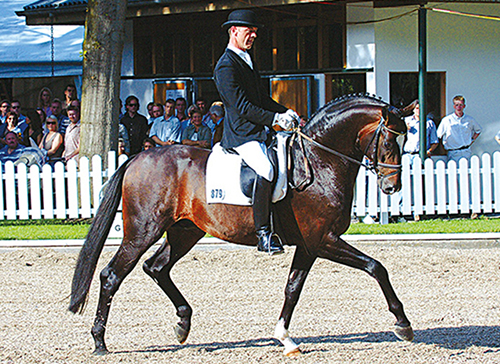
Sir Donnerhall
It’s back to me, so back to italics. That’s a coincidence since I had starting writing notes for an article along the same lines. Mine read – even if you look at the top horse, Johnson, there are no stars by him. His top points earner was Edison (Balzfug) whose best European result in 2022 was a 2nd at Wiesbaden 4* on a score of 77.57 – however he did go better in Florida where they tend to reward visitors making the long trip with generous scores, there he came 2nd in a 5* freestyle on 79.43. Edison is ranked 34th in the world. Johnson’s top five are ranked 34 / 55 / 59/ 68 / 86…
Over to Ludwig:
“I think it also has to do with the marketing of the stallions, they need to breed tons of foals to have a wide base, so a stallion with few progeny who do very well in competition, they never make it up to the top rankings.”
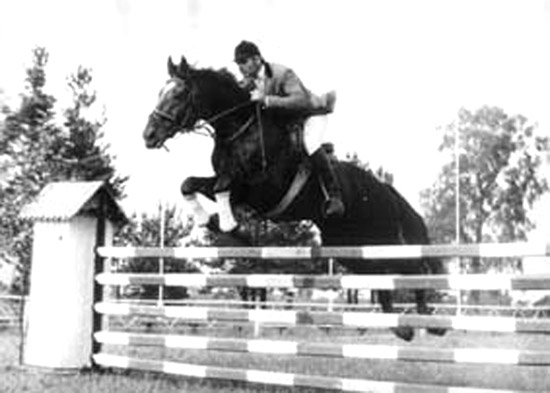
Rebus – he was the WBFSH Number one dressage sire!!!
Do you think the rankings need to be adjusted? When the World Breeding Rankings started they were so fixated on winning something big like the Games, that a stallion like Rebus was crowned world number one dressage sire, on the basis of just one single horse, Rusty! He was no sire, even the two Rusty clones were useless… Have we now gone too far the other way rewarding quantity not great performance?
“I don’t know all the details, but I understand that every international sport horse collects points for the Longines rankings and these points are just added for the sires rankings. When I looked at the dressage points it seemed like all these horses were successful at Grand Prix level, but when I looked at the lowest ranked horse with points for Johnson, the horse was ranked something like number 700 but the horse still has Grand Prix experience but maybe not at the top.”
Do you think we somehow have to weight Grand Prix results according to the standard of the competition, which would not be hard to do using the ranking points of the horses that actually competed to assess the standard of the competition… so if a horse wins a Grand Prix at Boneo Park in Australia, it does not get the same amount of points as the horse that wins at Aachen.
“I’m not saying that I want to change the system, but this is something that I realised…”
But we must have had the same realization at more or less the same time, when the rankings appeared… I was also puzzled but I thought, oh I bet the jumping rankings are different, the top horses will have to have really top competitors, WRONG. The number one jumping stallion is Chacco-Blue, and his top five competitors are ranked 61, 66, 86, 113 and 164.
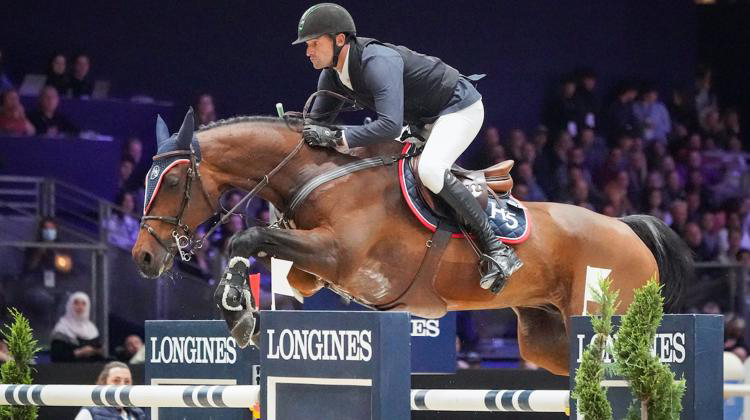
Number one for Chacco-Blue – H5Chaganus
“So it is similar, but a stallion like Chacco-Blue has something like 200 horses earning points for him, all the top jumpers have tons of horses earning points for them.”
The disconnect between the WBFSH top ten jumping sires and the Longines top ten jumping horses is almost complete – saved only by two stallions. The great sire (second ranked WBFSH) Diamant de Sémilly is the sire of the sixth best jumper, Vital Chance de la Roque and the tenth ranked Like a Diamond van het Schaeck.
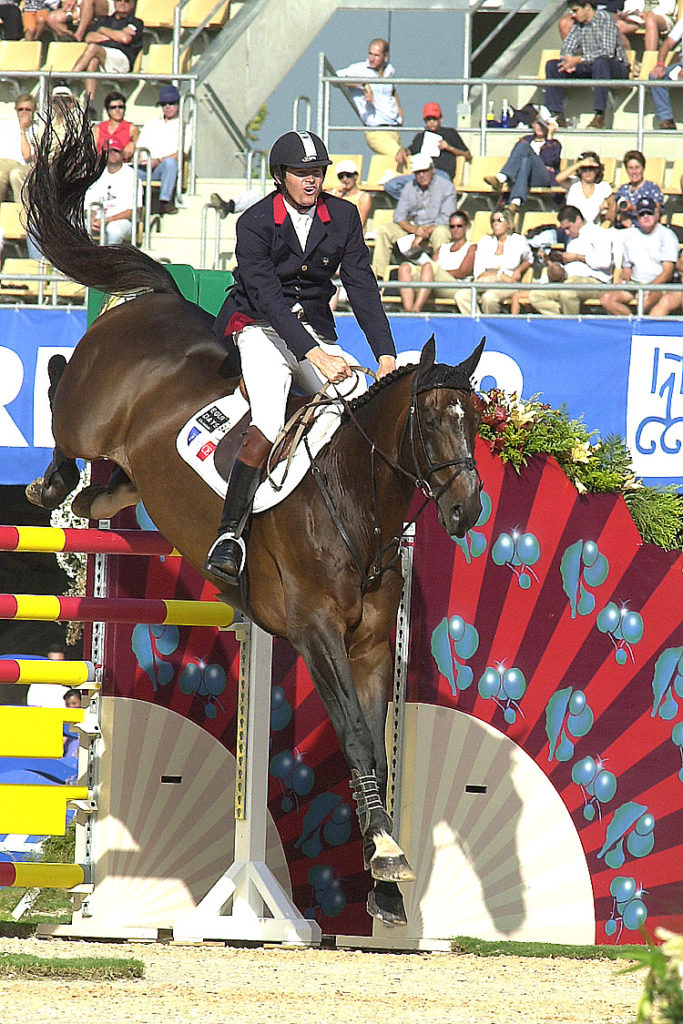
Diamant de Sémilly
The WBFSH 8th ranked Eldorado vd Zeshoek is the sire of the eighth ranked jumper Electric Blue P.
WBFSH top ten sires without a competitor in the world’s top ten include Chacco-Blue (WBFSH no 1), Mylord Carthago (3rd), Kannan (4th), Toulon (5th), Casall (6th), Cardento (7th), Nabab de Rêve (9th) and Zirocco Blue (10th).
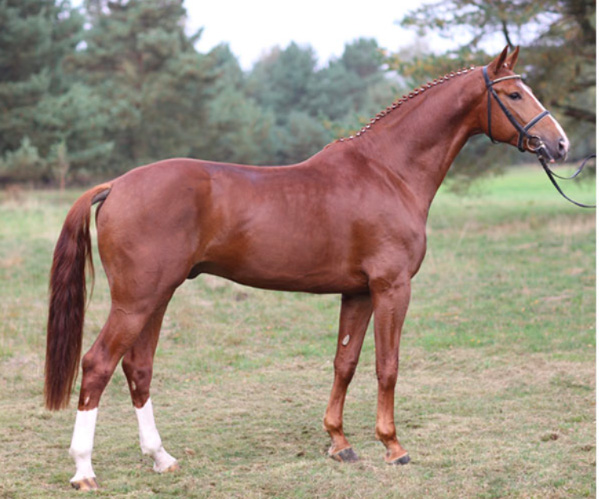
Edward – not on the WBFSH list…
Stallions with progeny in the top ten who do not make the WBFSH top ten include: Edward, Baltic VDL, Count Grannus, Bustique, Cassini II, Zandor Z and Contagio.
It is not a good system that measures quantity not quality…
Back to Ludwig… “The Sires Rankings are only a measure of one year, but the breeding values are a measure of the lifetime achievement of the stallion, and there are stallions with few offspring can still have a top breeding value. Like Breitling, the dressage stallion, he didn’t produce a lot of horses, but most of them went Grand Prix and so he had a super breeding value, but he would not rank highly in the World Breeding Rankings.”
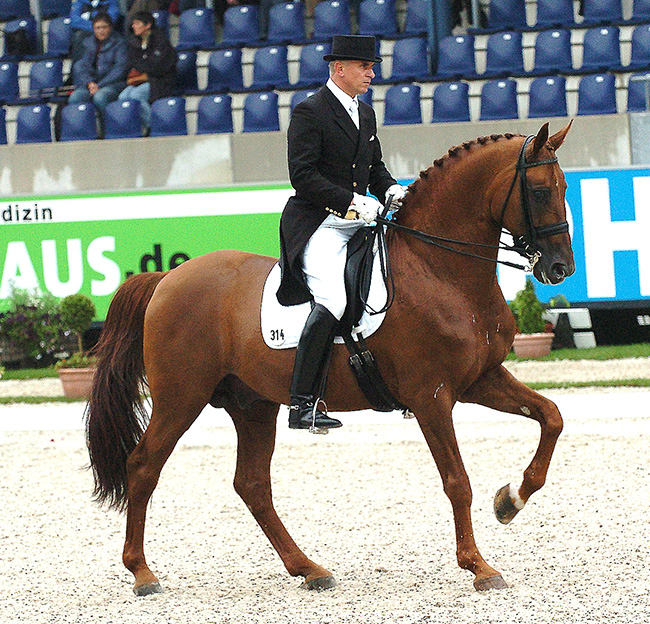
Breitling
“It’s interesting that you had the same reaction as I did…”
The minute I looked I thought, this is crazy!
There is a feeling amongst some of the German breeding experts that Sandro Hit is not really a Grand Prix producer… Certainly it would seem that the facts justify the suspicion about Sandro Hit. His number one horse is the eighth ranked Salvino, brilliantly ridden by Adrienne Lyle, then the four next best rank: 115, 118, 177. There is an almost complete disconnect between the world’s top ten dressage competitors and the WBFSH top ten sires.
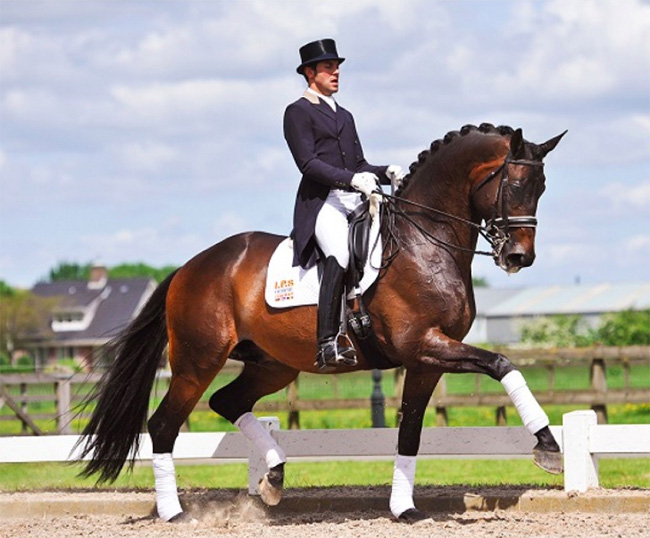
Easy Game
Easy Game, sire of no’s 1 and 6 in the world, does not make the WBFSH top ten. Quaterback is the only stallion to star on both lists, number 2 on the WBFSH rankings, and the sire of the 5th and 7th ranked horses in the world. As previously mentioned, Sandro Hit is the sire of the 8th ranked Salvino. The WBFSH ranked 10th Vivaldi, is however represented on the competitors standings by his son Vitalis who is the sire of the second ranked Vamos Amigos.
Stallions with progeny in the top ten who do not make the WBFSH rankings include Vitalis, Fürstenball, Lord Leatherdale, Don Romantic and Dimaggio.
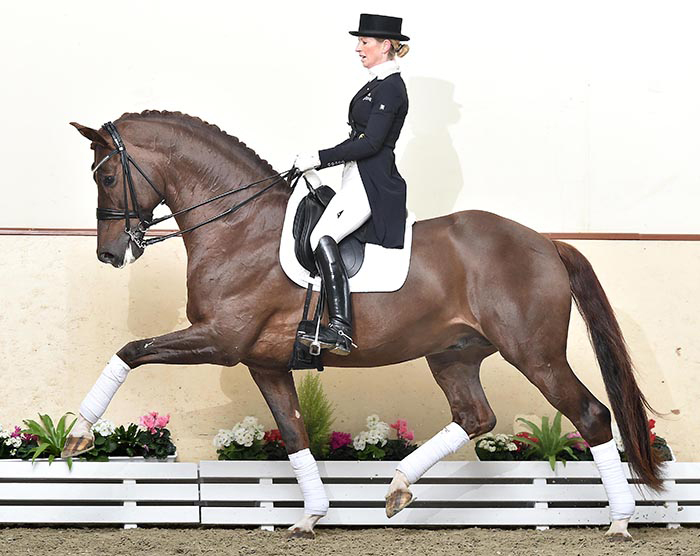
Vitalis
It would seem that the time has come for a thorough examination of the sires rankings and how the points are allocated…
“Maybe you can make a comment like that. I also made that comment in the article I am producing for the Hannoveraner magazine where I am comparing the breeding values with the rankings. ”
The worst ones are the WBFSH top breeder rankings which seems to be more luck than skill… This is what I had written the other day:
Perhaps the most obviously weird of the rankings is the dressage breeders standings. This year, for the second year running, the dressage breeder of the year is Silke Druckenmüller, the breeder of Dalera. Really Ms Druckenmüller would seem more a dressage competitor than a breeder.
Her mare, Dark Magic (Handryk / Hohenstein) foaled Dalera in 2007, then she spent the next six years competing at B level dressage with her owner. In 2013 her breeding career was resumed when she foaled Dallenia (Millenium) described as a PSG/Inter I competitor with Luxemburg’s Kristine Moeller, although neither horse nor rider appear on the FEI website…
Two year’s later another Millenium foal arrived, this time the gelding Dallenion who made a spectacular Grand Prix debut at den Bosch with Benni Werndl to rave reviews, in March 2023.
Three years later, a stallion full brother of Dalera, whose appearance at the Trakehner licensing was much heralded, alas he was not licensed and seems to have disappeared. But if Ms Druckenmüller was more of a rider than a breeder, maybe we should compare her the second-ranked WBFSH breeder of the year, Eugène Reesink.
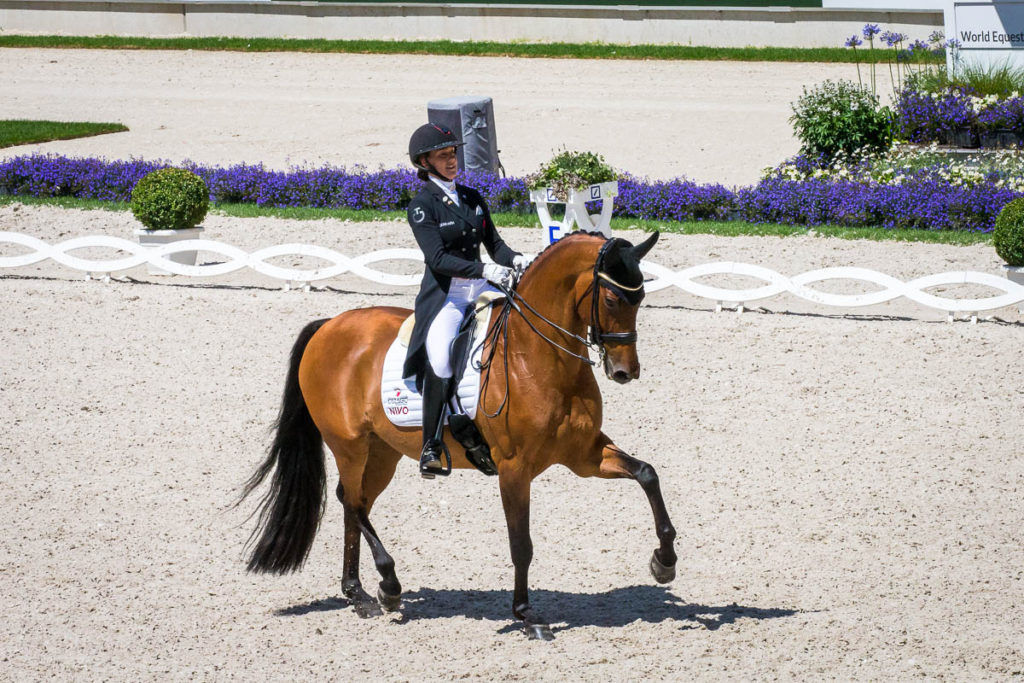
Vamos Amigo
Eugene is a breeder through-and-through, and has produced an astonishing number of top horses, many of them he purchased as foals, but he has still bred some really important horses – like the top stallion, Vitalis, or the Grand Prix star, Vamos Amigo, or the exciting young stallion Vaderland…
I have also seen years where a breeder of jumping horses, and a breeder of dressage horses, have had two horses in the world top 20, but the title of breeder of the year has gone to the breeder of one horse.
“But I think it is acceptable that the breeder of the number one horse in the world, is also the number one breeder, it is special to have the number one. Paul Schockemöhle has he ever been breeder of the year?”
No he hasn’t.
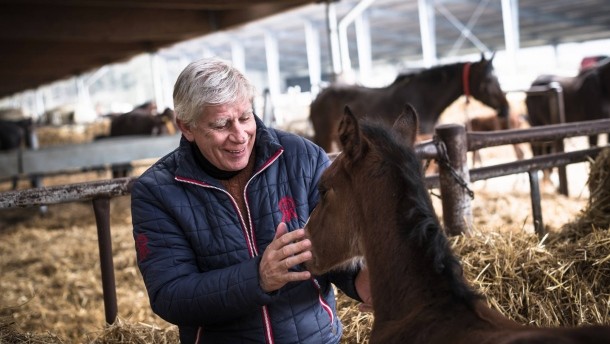
“I think what Paul Schockemöhle is doing is very special, there’s no breeder in the world like him at the moment. He has become extremely influential in Germany – as a breeder and with his stallion station. When you look at the top stallions in the dressage, three of them are, or were, standing at his station. He stood the number one jumping stallion, Chacco-Blue, I think he’s done a really good job. He breeds something like 2000 foals a year out of strictly selected mares, unbelievable.”
Thanks Ludwig – the rest of this article is all my own words – CH
Perhaps we need two awards, one for the breeder of the top horse, and another overall breeder of the year, selected by an expert panel?
Let’s look at the eventing sires list and see what we find…
The number one stallion on the eventers list is Diarado (Diamant de Sémilly / Corrado). The stallion was licensed in Holstein to a flurry of superlatives, and managing his breeding career was shared between the Holstein Verband, Van Uytert and Schockemöhle, each with a large and established customer base. He covered about 800 mares a year since his debut in 2007, although the numbers are dwindling, partly because Diarado was no star in the jumping arena, and largely because very few of his progeny have been stars. I suspect that the eventers he has bred, were meant to be showjumpers, but like their sire, lacked scope.
Diarado’s point earners are headed up by the world’s number 27, QC Diamantaire (out of a Sandro Hit mare). Ridden by American Sydney Elliott, Diamantaire’s biggest payout so far has been $11,000 for an 8th at his only 5* start at Lexington.
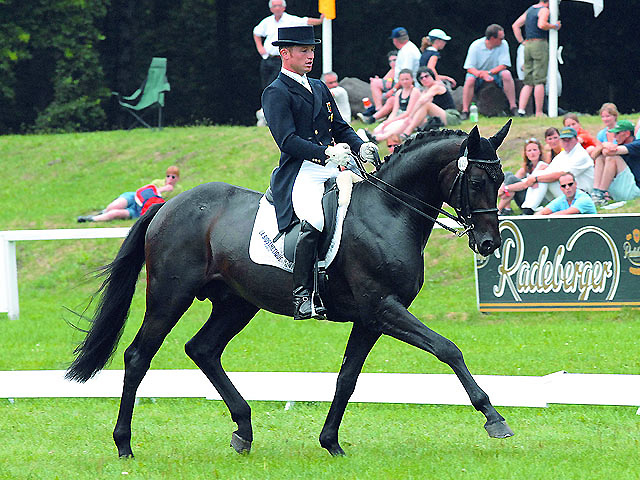
The second ranked eventing sire, the Trakehner Grafenstolz (Polarion / Camelot) has bred an average of 80 mares a year, and given that the stallion competed three-star with Michael Jung and was marketed as an eventer sire, we can assume that the breeders were looking for eventers, and they were rewarded. Grafenstolz’s highest ranked competitor, is the world’s number four, Lordships Graffalo who was destined to be an eventer right from conception – the gelding is out of a four-star mare, Cornish Faer, by the Just a Monarch xx son, Rock King, out of a mare by that prolific sire of eventers, Ben Fairie xx. And that is just what he has done, ridden initially by Tom McEwan, the ride went to Rosalind Canter in 2020, he has had a stellar career, including a second at Badminton in 2022.
After that the progeny fall away, next best is ranked 184th, then 228, 264 and 315th.
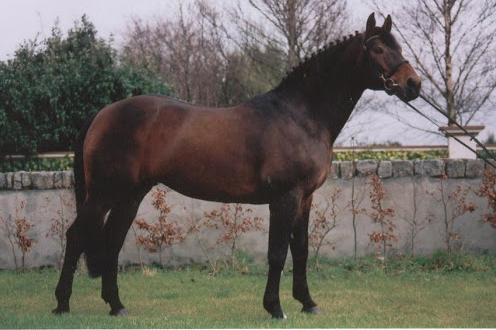
Obos Quality
Ranked fourth, Obos Quality was one of the imports that saved the Irish horse disappearing into its closed studbook. The stallion jumped 1.60m, and is by the great Quick Star out of a mare of Hanoverian breeding. During his time in Ireland he sired mainly showjumpers, but he did produce three 5* eventers. None of his 2022 crop are stars, they are ranked 161, 190, 208, 264, and two on 370.
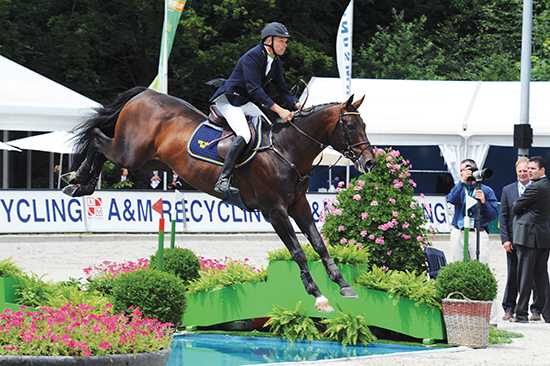
Jaguar Mail
The French bred (7/8th Thoroughbred, by Hand in Glove xx out of a Laudanum xx mare) showjumped at an Olympic level but has had more success as an eventing sire. He is the sire of World Young Horse champion, and 5 star eventer, Tenareze (Quatar de Plape), and the superstar, Vassily de Lassos (Jalienny), both horses are out of Anglo mares and both were started by French eventer, Thomas Carlile, who thinks Jaguar Mail needs the Anglo-Arab on the dam side to sharpen them up.
The world’s number one eventer, Michael Jung’s fischerChipmunk FRH is by Contendro I (Contender / Reichsgraf) out of a mare by the greatest eventing sire of all time, Heraldik xx (three of Contendro’s top ten in 2022 are out of Heraldik mares). Contendro’s next best is another Hanoverian, C’est la Vie out of an Aarking xx mare, 49th. Then 101, 107, 112, 238.
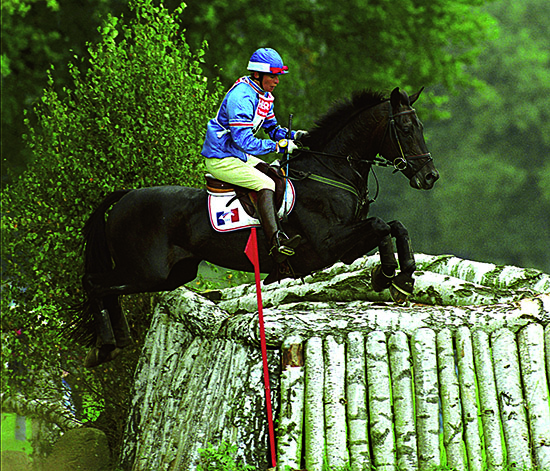
Summer Song
The sixth ranked eventing sire, was one of the legends of the sport, Yarlands Summer Song. The Trakehner was also bred to go cross country. He was by another eventing Trakehner, Fleetwater Opposition, out of a mare from Sam Barr’s pioneering program to breed eventers, the three star eventer, Welton Gazelle by Welton Gameful.
The top six are regulars on the WBFSH eventing sires list, but then we have some new faces…
The seventh ranked Nouma d’Auzay (up from 47th last year) is by the great Holsteiner, Cathargo, out of a Quidam de Revel / Le Tot de Sémilly mare. Nouma is the sire of Banzai du Loir (Livarato) ranked second in the world. He is the sire of two 5* eventers, three 4* and two 3*.
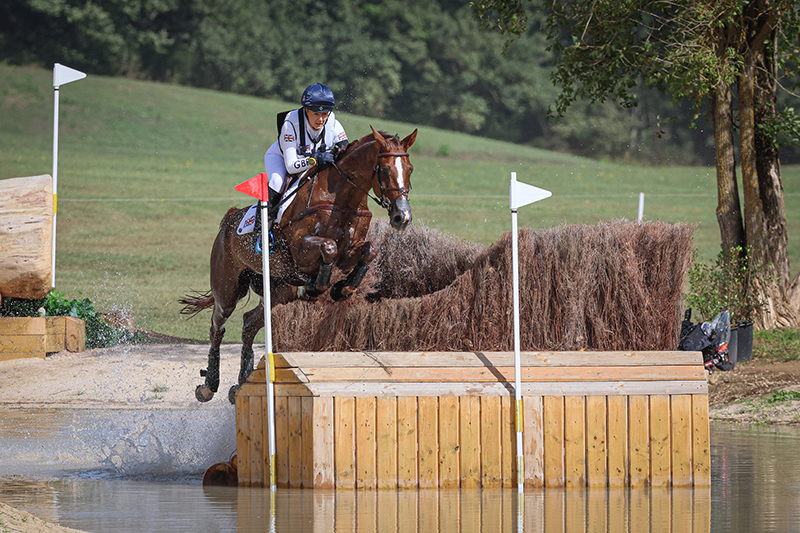
Banzai du Loir ©FEI /Massimo Argenziano
In eighth on the rankings we have another leap, this time from 37th, Camiro de Haar Z (Chellano / Ramiro) a 1.60 jumper with a trio of Irish riders. His best eventer is the mare, Vanir Kamira, a 5* competitor with Piggy March, and ranked 6th in the world.
Kannan (Voltaire / Nimmerdor) in ninth, is another newcomer to the top ten, up from 28th last year, and again one has the suspicion that he owes his place to the quantity of foals he has sired. His top five are ranked 70, 77, 522, 568 and 608.
Rounding out the top ten we have VDL Arkansas (Acobat II / Silvano), a 1.40m showjumper. His star eventer is Off the Record (Drumagoland Bay), a 4* eventer with American William Coleman.
The British data analysis company, Equistats, started out concentrating on eventing before more recently adding showjumping. Their analysis is so revealing that it is being used by a number of national federations to select their squads. By calculating the expected dressage score for each horse, Equistats are capable of identifying events where the judges have been exceeding generous, and the juries that have been unusually harsh, which gives context to the individual scores, and the horse’s rating can be refined.
There is no reason the same system could not be applied to dressage, indeed it should be easier since it only has to weigh one discipline. Using a system like this, the leading sires standings could be re-calculated to produce results that highlighted the stallions producing excellence rather than the stallions producing large numbers of foals… And the same process could be used to refine, showjumping and eventing standings. Think about it…

